London City Guide

Given London’s vast size, it’s worth splitting a city guide on where to run, cycle and swim into separate sections according to their North, South, East and West orientations. Bearing in mind London’s business and cultural highlights are widely dispersed, familiarising yourself with the spread of sports facilities planted in transport Zones 1 and 2 provides you with wide berth for organising training sessions during your stay.
Some more leafy neighbourhoods have a clear advantage for runners and cyclists, but no part of London clearly excels for all three of running, cycling and swimming. The purpose of this guide is to strike a compromise with your non-athletic commitments in the capital, ensuring you have an awareness of what options are available to endurance athletes visiting London.
To make the most of this guide, note a few patterns and features. Facilities are broken into categories according to their running, cycling or swimming focus, with a separate section highlighting quality gym facilities in London. All facilities allow for drop-in visits during “open” hours, so you don’t need to join an organised session to gain access. Exact hours aren’t indicated unless very restrictive, and prices are also omitted in the knowledge that no listed facility charges more than £25 for day access. Instead, a full directory of telephone numbers is provided in the final Directory section so you can call ahead to confirm your intended training time. The place names in the Directory link directly to the venue’s Google Maps profile – click on the place name to generate directions. Sections describing the important features of facilities do so by working venue-by-venue clockwise from the city’s north-eastern frontier to its north-western, or else north to south when they fall in a plumb line. All section outlines a good way to play your accommodation and eating during your time in London.
Logistics & Orientation
As for the layout of the city and its weather throughout the year… The West-East flow of the Thames divides North, West, East and Central London with the city’s southern neighbourhoods, congregating around Battersea, Southwark, Bermondsey, Brixton and Clapham. Some hills can be found in the north of London, but otherwise, the city is fairly flat with no serious climbs.
London’s climate brings warm, dryish summers and wet, mild winters – snow never settles in London and you won’t find the streets icing over. Daylight saving hours from the final Sunday of October to the last Sunday of March mean that the streets get dark by 4pm in December, though you’ll still be able to get a short run in before work. For an idea of just how dingy the days can get: the sun will rise at 8:03am on the 2017 Winter Solstice (December 21st), setting less than eight hours later at 3:53pm.
Running
London’s portfolio of parks and gardens make up an impressive set, broad enough in their topography to host your long flat run, cross-country route or a hill interval or two. Additionally, the city’s built environment often lends itself to good runs, particularly when set against waterways and / or on the many 400m athletics tracks. The invention of parkrun nearly 15 years ago adds another layer to the more organised side of running in the capital, along with the flourishing running crews that have started to close the gap between cool and cardio.
If you’re staying in the North, Hampstead Heath is your backyard, the most diverse piece of terrain until you get to Richmond Park in the far bottom left corner of London’s orientation. In the East, look to Victoria Park and Hackney Marshes for flat loops, or else jump on the Canal and run left or right until you’ve had your fill. The Canal can be confusing, changing names from Little Venice to St. Pancras Canal to Regent’s Canal as you slide from West to East, but essentially its a continuous waterway with paths on the north and south. Note that the Canal is also popular with cyclists, so just make sure you’re prepared for faster vehicles on both sides. Those staying in Central or West London have the flatter Hyde Park and Regent’s Park options for long, uninterrupted runs. South of the Thames is the smallish Battersea Park and hotspot for young Londoners, Clapham Common.
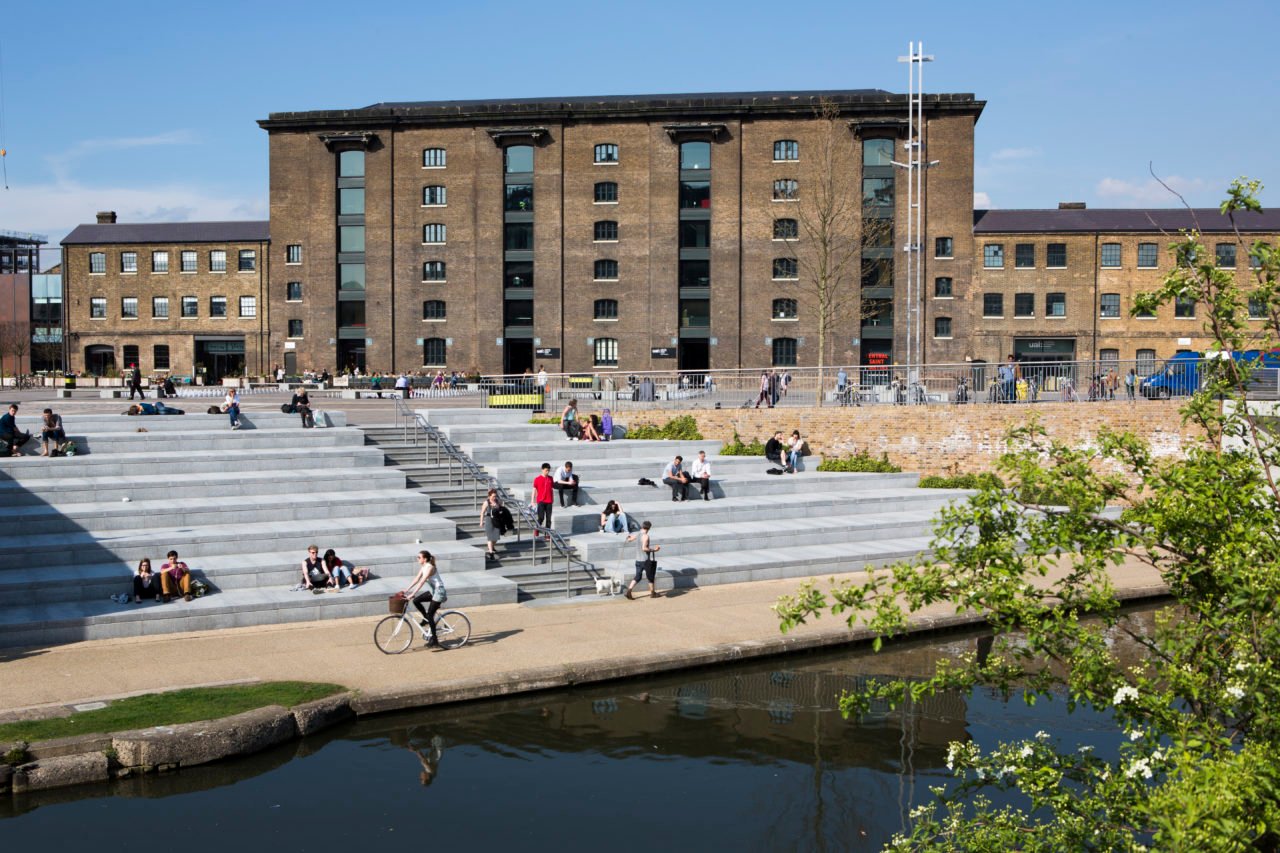
Athletics tracks are found within some of London’s parks, with a couple floating as nearby satellites. Hampstead Heath is home to Parliament Hill (Fields) Athletics Track and running club Highgate Harriers who have training times on Tuesday and Thursday evenings, as well as weekends. Two miles due east in Finsbury Park is the recently resurfaced London Marathon Athletics Track, accessible when joining local club London Heathside for training sessions. Drop-in for your first trial if you’re visiting, but they do place restrictions on non-members joining sessions.
South of Finsbury Park is robust Mile End Park Leisure Centre and Stadium which has broad opening hours for its floodlit athletics track, allowing visitors on a drop-in basis. It’s worth noting that this facility is the most comprehensive within London if you’re thinking about swimming and gyming as part of a longer session. Victoria Park & Tower Hamlet Harriers are the club at Mile End, offering training sessions with some of the top Kenyan residents of London.
On the other side of the river, also in East London is Southwark Athletics Centre. The facility currently has restricted open hours for the general public use due to an exciting refurbishment – drop-in Saturday mornings from 9am to 12pm until this is updated [October 2017].
Further upstream is Battersea Park Millennium Arena which has healthy opening hours. Navigate south to Tooting Common and find Tooting Bec Athletics Track where Herne Hill Harriers host training on Tuesday and Thursday evenings. Swinging to North London again and Paddington Recreational Ground is your best bet, home to Serpentine.
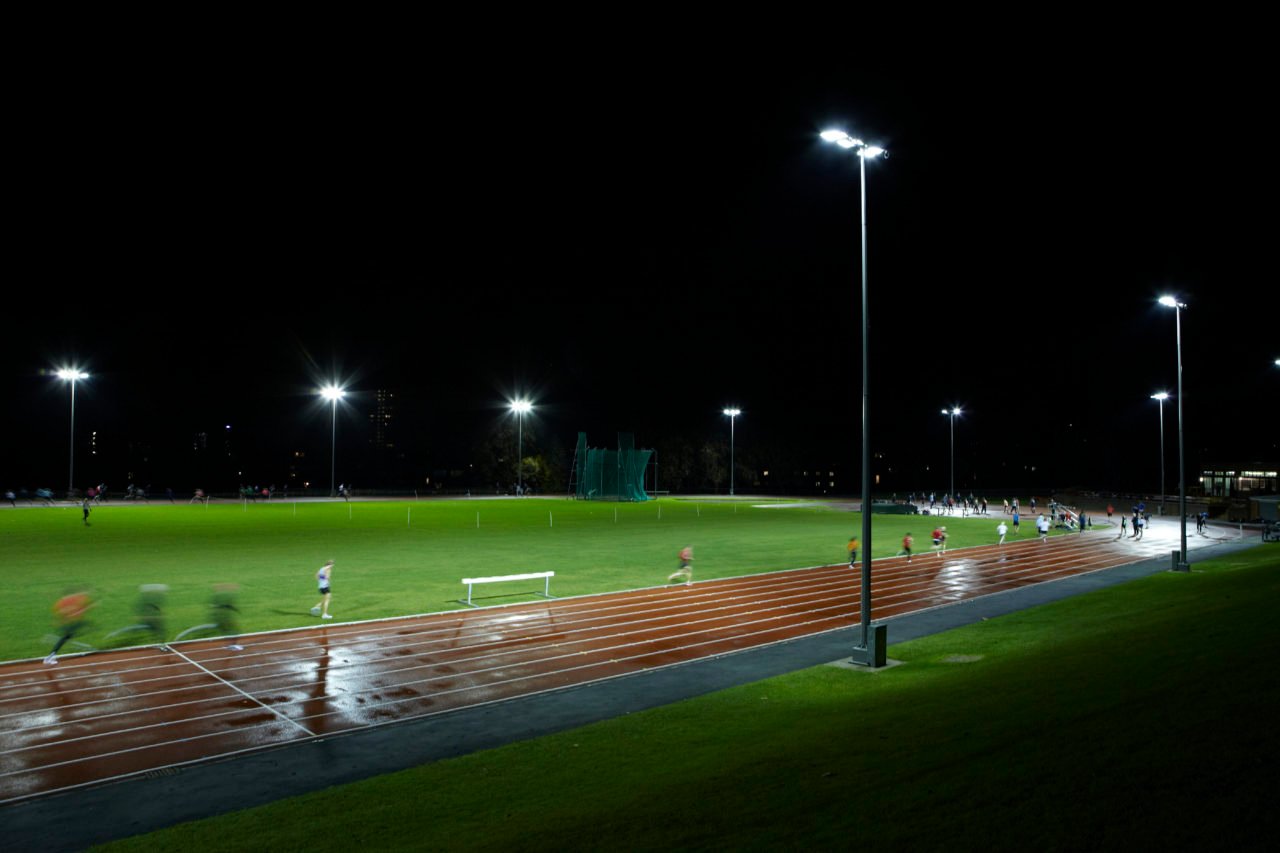
As well as offering green, car-free corridors for running, urban planning has found a respect for a few hills which have been preserved as public parks. London’s high ground in the north is made up of Muswell Hill, Highgate and Hampstead Heath, home to Parliament Hill, a piece of land that floats up from the athletics track to a modest yet significant 134m above sea-level, making it the highest natural point in the city.
The south side of Parliament Hill is the best point of attack for a solid hill interval on Hampstead Heath, with a grassy rise offering a steady 6% climb over 400m. This patch of grass may get muddy in the winter, so make a note of a 270m tarmac strip which ramps up from watering fountain next to the children’s playground (also 6%). Nearly two miles south of Hampstead Heath is the Primrose Hill, a parcel of land surrounding the actual knoll that sits to the north of Camden Lock across from Regent’s Park. A number of tarmac strips ramp up to the top of your hill – take your pick depending on distance and gradient.
In the south of London, Greenwich Park is home to a 300m climb that rises at an average gradient of 8%, topping out at the Royal Observatory. Further south-west is Hell Hill (300m, 11%) in Dulwich Wood and a steadier 600m, 8% gradient climb along the lake in Crystal Palace.
The first ever parkrun was held in 2006 in Bushy Park, found in London’s historic south-west corner. Since this inaugural event, London has developed an impressive coverage of 5km runs every Saturday morning at 9am. These free-to-enter dashes are well worth checking into – if you are new, just generate your own barcode online, print a copy then bring it to the run to have it scanned at the end of your race. You’ll then be emailed your official time a few hours after you break the finish line.
Other organised sessions worth looking into include the LOWA Sprint Club, a recent programme out of the London Olympic Weightlifting Academy that’s taking athletes onto Battersea Park Millennium Arena to train speed. Advent Running and Tribe are two running collectives who organise weekly guided runs with no membership requirement – meeting times and venues listed on Strava and Facebook respectively.
Cycling
The domination of Team Sky and the resounding success of British Cycling in recent years is just one end of the sport’s representation on the tiny island. At the other end of the spectrum are some half million Londoners who commute to work using pedal power. Bunched at any traffic lights are the middle group – cyclists who take their commute very seriously, clad in lycra and quite often en route to London’s focal points for cycling. Beyond commuting by bike, you have three options to continue riding in London: indoor classes, city loops and hills, then more rangy routes for the weekend.
Quality cycling terrain is scarce in London, though the undulating Richmond Park in south-west London is a good place to start, followed by the more central pan flat Regent’s Park. During the week use these patches for your short efficient workouts, leaving the weekends for your longer rides beyond the M25 (London’s orbital motorway).. Premium bike rental is available in London, through Rapha, London ($200 annual membership required) or On Your Bike who have road bike options on a 72-hour basis, as well as weekly.
Though you might not be able to get out on serious rides during the working week, there is a group of tough hills in the north of the capital if you’re prepared to beat the traffic and strings a few intervals together. This cluster of bumps includes Alexandra Palace (1km, 5%), Swains Lane (0.8km, 8%) and Muswell Hill (0.6km, 9%). The climb up the south side of Alexandra Park offers the longest and most steady climb, with Swains Lane offering a short but most aggressive incline – a 40m section spikes at 14% near the top of the climb.
As for weekend loops out of the city, there are four vital directions, bearing in mind London’s eastern frontier breaks out into the Thames Estuary. Head north-east to Essex via Highgate to get into undulating terrain and farmed fields. Roll due south in the direction of the Eurostar and you enter Kent Hills. Work clockwise and you may pass cyclists attempting to shuttle to and from Brighton. Riding toward Essex is the quickest way to get yourself to greenery and reduced traffic, though the climbing is modest compared with home counties to the west of London. For the sake of reinforcing your knowledge of Heathrow’s flightpaths, heading west offers a healthy pot of options for your first and second rides out of London.
The Surrey Hills lie south-west of the capital, rising up a few miles outside the M25’s demarcation of Greater London’s final edge. Navigate in the direction of G!RO Cycles in Esher to make sure you get out of central London safely. From G!RO, you’ll find plenty of cyclists heading out to the Surrey Hills. Either hang onto their coattails or head in the direction of Boar Hill and Coldharbour Lane (1.8km, 7%).
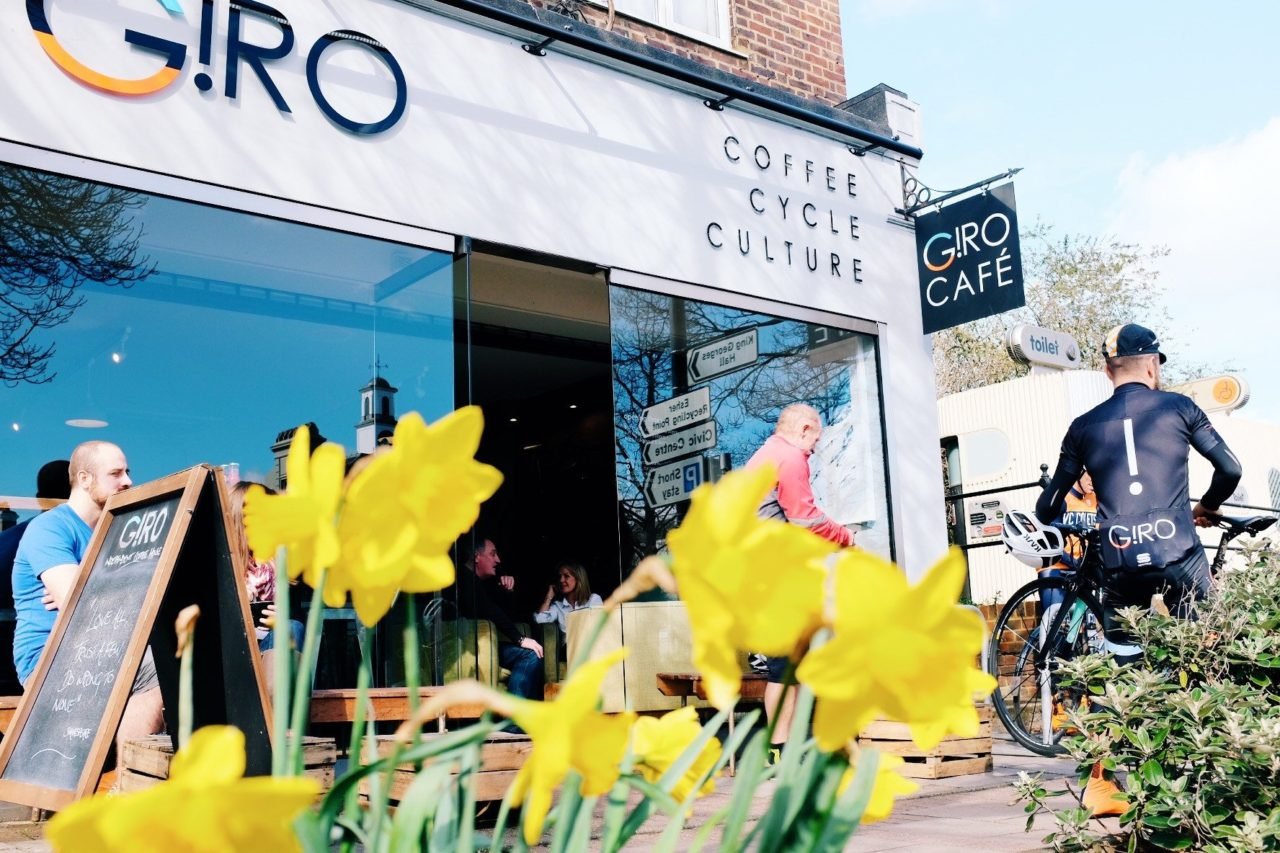
Once you’ve cut this south-westerly vector, you’ll be nearing in on the heart of the Surrey Hills. This varied terrain is well forested, with narrow lanes providing intimate English countryside cycling. The Surrey Hills are home to some very fun climbs including Leith Hill (2km, 7%), Box Hill (5km, 2.2%) and Col du Alderbrook (3.7km, 5%). Leith Hill is widely considered one of the toughest climbs in the London area. The billiard smooth Box Hill tarmac was used in the 2012 Olympic Road Race and at times Alderbrook Road ramps at 13%. Parallel to Alderbrook Road is Barhatch Lane (2.5km, 6%) which is, in fact, more tricky than Leith Hill, hiking up to 21% at points. Here’s a route that encompasses Leith Hill and Box Hill – London to Box Hill.
If you’re heading into the Surrey Hills and concerned about supplies, make a note of Peaslake Village Stores near Leith Hill, Dabbling Duck in Shere near Combe Lane (1.5km, 7%) and to the west, White Down (1.9km, 6%). Bike Beans Cycle Cafe is on the north-east edge of the Surrey Hills, just within the M25.
The Chiltern Hills are your next option for an early ride out of London. Cycle out via Windsor Castle or else take a train out of Paddington to Maidenhead to get your wheels into the good stuff without having to trawl through traffic. From Maidenhead, head to the Thameside village of Marlow, glance around for Clooneys, then take Freith Road into the Chilterns. Once you set this vector into the Chilterns, you can’t really go wrong. Freith Road takes you into the belly of the low-lying range of hills switching you onto auxiliary lanes until The Chilterns collapse on their western edge into the flatter terrain that runs all the way through Oxford (read up on this geological background of some of these perilous climbs).
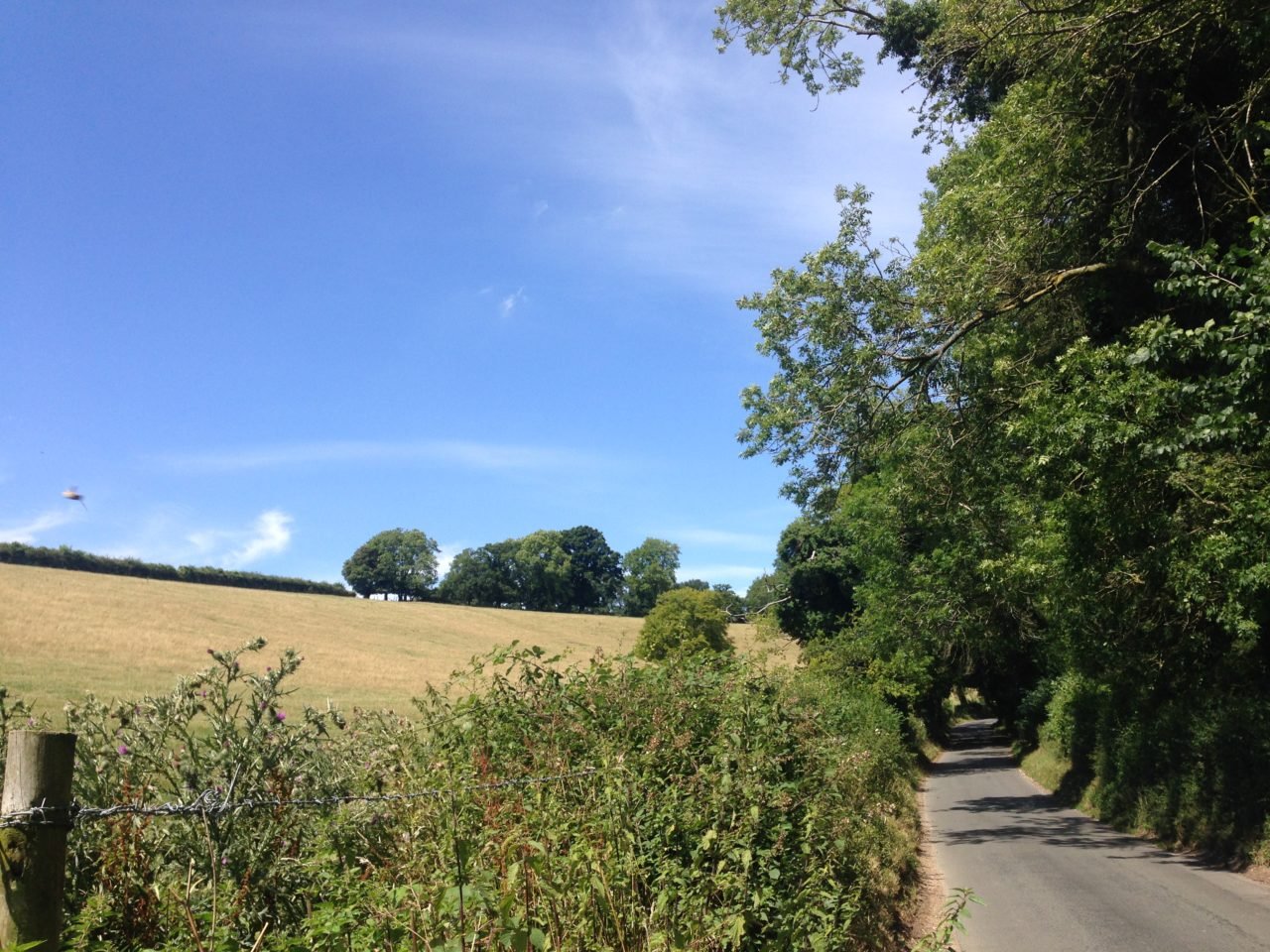
This ridgeline on the western flank of the Chilterns is well worth skirting. Even though its climbs don’t compare in length with alpine ascents in Europe, you’ll find plenty of gradient above 10%. Listings from north to south, all within reach of a 60-mile ride starting in Marlow: Kop Hill (1.9km, 7%) Chinnor Hill (1.7km, 6%), Kingston Blount (2.5km, 5%), Aston Hill (2.8, 4.4%), Watlington Hill (1.9km, 6%), Britwell Hill (0.9km, 9%), Swyncombe Hill (1.8km, 5%).
A good waypoint to build into your Chiltern cycle route is the riverine twin villages of Goring and Streatley, bolted onto opposing banks of the Thames. Here you’ll find an excellent cafe and restaurant, Pierreponts, as well as a hotel on the other side of the river, The Swan at Streatley.
Swimming
An interwar focus on welfare saw a feverish construction of outdoor facilities for bathing. Just as Britain’s empire began to crack, the construction of new outdoor swimming pools signposted a commitment of leisure for the masses. Though many lidos from the period have since been shut and snapped up for residential development, a dozen or so remain dotted about London, complementing the more recent development of indoor pools in the basements of London’s busier neighbourhoods. It’s hard not to state a preference for outdoor swimming over indoor laps, so we’ll begin with those lanes that bobbing in the city breeze and touch on some open water options too.
Since opening its doors in 1938, Parliament Hill Lido has become an iconic part of North London’s architectural history, now deserving of its Grade II-listed status. The pool is 60m in length and unheated, yet still open in the winter for the very brave. Current water temperatures are listed on their website in degrees Celsius.
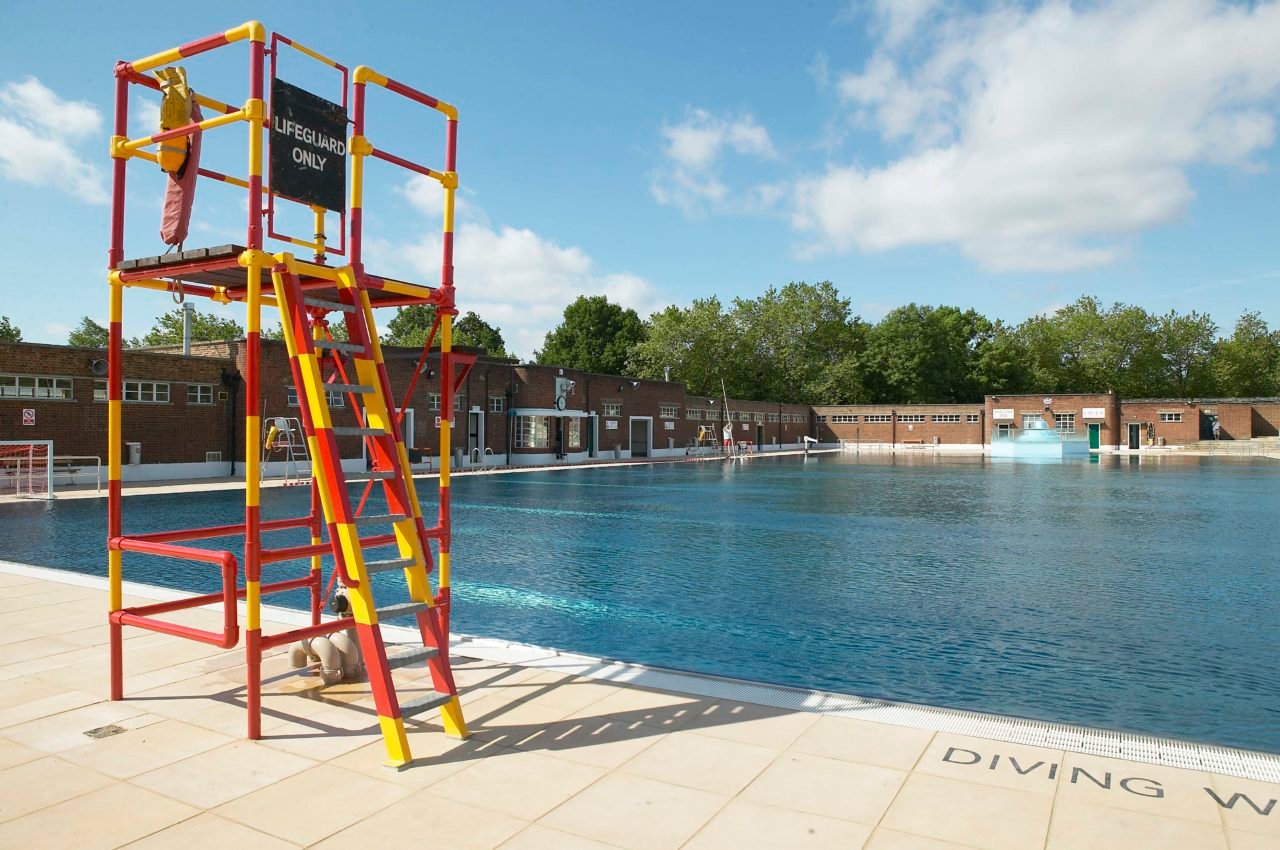
Take a south-easterly vector to the next swimming pool, found in the trendy Dalston / Hackney neighbourhood. London Fields Lido is a 50m outdoor pool that is heated throughout the year. Refurbishments are ongoing so keep in touch with developments on their website [October 2017].
If you find yourself near the theatres in the West End, note that Oasis is just two blocks north of Covent Garden. True to its name, the pool is wedged on each side by multi-story residential blocks, making this 27.5m heated outdoor pool a welcome place of retreat.
More London lidos emerge further south across the other side of the Thames. Constructed in tandem with Parliament Hill Lido is Brockwell Lido, a 50m outdoor pool that is also unheated, found one mile south of Brixton train station. The lido has been a focal point for the local community who rallied against Lambeth Council to re-open the pool after its closure in 1990. Since the founding of the “Brockwell Icicles” in 2012, pressure has mounted further such that the facility has been open seven days a week since 2014.
Tooting Bec is the furthest south lido, making the most of its allowance in Tooting Common with an incredible 91.5m length (100 yards). This not only references its 1906 opening date but also makes it the largest freshwater lido in the United Kingdom, at least by surface area. To swim during the winter (1st September to 31st March), you’ll need to be a member of South London Swimming Club. If you weren’t already considering the journey to this southern outpost of London’s swimming scene, know that Brad Pitt’s boxing “pool” scene in Snatch was filmed at the Lido.
Two more natural swimming options come in the shape of three swimming ponds near to Parliament Hills Lido, catering for men’s, women’s and mixed. Scan this wonderful map to make your choice but note that you do need to obey allocated opening times and are allowed to swim during the winter if you are part of Hampstead Heath Winter Swim Club (call to enquire).
In Hyde Park, a 100m section of London’s Serpentine has been sectioned off to create the Serpentine Lido, open during the summer months. To take a more hardcore angle and swim throughout the winter, you’ll need to join the long-distance swimmers over at Serpentine Swimming Club. Given that membership to the club grants you access to Saturday morning races and the famous “Peter Pan Christmas Day Race”, the £20 annual membership fee is cracking value.

If you can’t find yourself swimming outside, London has a handful of decent indoor pools with annoyingly odd lengths. Kentish Town Sports Centre in North-East London offers two pools, the 30.5m Willes and a 25m pool, Grafton, home to Camden Swiss Cottage Swimming Club. Further south, on the other side of Camden Lock, is the redeveloped King’s Cross quarter of London where a 25m pool can be found in the foundations of Pancras Square Leisure. At 30m in length and a block north of Old Street is Ironmonger Row Baths. The final East-ish indoor swimming pool in London is near to Bethnal Green tube, the 33m tub at York Hall Leisure Centre.
In Soho, Marshall Street Leisure Centre is set at an irritating 30.5m but has a 1930’s marble floor to distract you from this anomaly. Nearby, Central YMCA got it right with a 25m pool and will soon exceed all competitors with a refurb of their facility in January 2018 – claim your free day pass in the meantime.
In the south-east of London is the 25m pool Peckham Pulse Leisure Center. Swing west between the commons of Clapham and Tooting to a pool of the same length at Balham Leisure Centre, notorious for its impressive vaulted ceiling. Seymour Leisure Centre is home to a 30m pool near Paddington Train Station while Queen Mother Sports Centre has a 25m near Victoria Train Station.
It’s worth mentioning a few swimming facilities that are a little too far from central London, more suited to timeframes on a weekend. Charlton Lido is on the east side of Greenwich Park, a 50m heated tub. Having the Serpentine in central London is remarkable, given its location and the quality of its open water but other open water areas within the London metropolitan area are more expansive including West Reservoir Area in Hackney and the London Royal Docks, the latest addition to the capital’s swimming options. Outside London, Thorpe Lake, Heron Lake, Liquid Leisure and Shepperton Lake are each located to the West.
Gym
London represents the full array of gym world, with regular gyms, CrossFit boxes and old school weighlighting setups available for drop-ins. Having open gym sessions, Olympic bars and pull-up bars is a minimum requirement for making this resistance section – you’ll have to enquire via the telephone numbers in the Directory section below to be sure of more refined items like weight bands and cardio machines. Of course, CrossFit boxes and Weightlifting gyms take a purist approach.
A couple of fresh gym chains like Equinox and Barry’s Bootcamp offer pristine hospitality, but run their businesses as membership-only and class-only respectively. Flexible business models make more sense if you are travelling through London and want to get up to your own training uninterrupted.
Soho Gyms are more flexible and while they don’t offer the most impressive spaces, they do accept recurring drop-ins and are widely available around central London. Going from north to south, you can find Soho Gyms at Camden, Farringdon, Holborn, Earls Court and Clapham. Crisper facilities are at PureGym, part of a 24-hour, automated access gym system that’s worth checking out – apply for their day pass (mobile-friendly).

As for CrossFit gyms offering open gym sessions on a drop-in basis without the need for an induction session, look here. CrossFit London in Bethnal Green – obey drop-in instructions for pricing and booking. Crossfit CityRoad has venues in both Old Street and Victoria and welcome guests for a £20 drop-in fee at the Old Street venue (complete drop-in form beforehand). On the other side of the river in Clapham, look to in2crossfit and their timetable.
Within the weightlifting domain, two venues are worth looking into, stretched across the east-west, north-south-Thames. Out East is Bethnal Green Bodybuilding Gym, an institution that’s taken the initiative and accepts drop-ins during their open gym hours. On the other side of town is London Olympic Weightlifting Academy whose £70 annual membership could well be worth it even for just a few sessions.
Sleeping & Eating
Since the Millennium, the progression of London’s eastern neighbourhoods has been dramatic. The decamping of a number of large banks to Canary Wharf swung London’s financial focus further downstream while allowing space for creative industries around Shoreditch, Old Street and Aldgate. These neighbourhoods are also highly sought after places to live, balancing West London’s prestigious neighbourhoods with a dynamic set on the other side of The City.
Basing yourself out of The Hoxton, Holborn gives you a decent opportunity to continue your training if your interests are traverse running, cycling and swimming. But if you know what kinds of sessions you’ll be doing during your stay, prioritising for proximity always makes sense. An idea for runners might be to stay up near Hampstead Heath so you have hills and a track. Cyclists might look to Chelsea and Fulham for getting out to Richmond, and to the Surrey Hills and Chilterns on the weekend. Swimmers have a little more freedom, although The Serpentine’s location in Hyde Park provides novel approach to the city, using indoor pools nearer to your movements during the day.

Another option for accommodation in London is to check-in further west, at Inhabit in Paddington. As well as being a member of Design Hotels with impeccable, functional interiors, Inhabit has an inventively healthy menu and is located just off the corner of Hyde Park. This location tees it up for running and cycling, as well as swimming in the Serpentine. The breakfast menu and smoothies are a highlight for mornings, an effective incentive for waking early.
As for coffee, London is also a global capital for cycling-cafe culture, consolidated by a dense coverage of specialty coffee shops. Rapha Clubhouse on Brewer Street in Soho is a requirement. Perhaps the best effort to come to terms with London’s mighty coffee scene is to plot a coffee shop per London Underground stops from Chris Ward of workwhereyoulike.com. Borough Market has Monmouth Coffee, and for pairing with Regent’s Park loops, head to Monocle on Chiltern Street who open at 7am.
Creating a refined list of eateries is no easier, but here are a few that tie into some of the training locations. The Quince Tree in Clifton Nurseries might be a good waypoint if you want to run along the canal as far as Little Venice. If you’re in Soho, Camden, Kings Cross or Dalston, look out for Mildreds where you can get vegetarian or vegan salads to have in or take out. A breakfast option near to The Hoxton is 26 Grains – the best porridge in London and open from 8am weekdays.
Directory
Battersea Millennium Arena: 020 8871 7537
Bethnal Green Weightlifting Club: no number
Hampstead H. Swim Club: 07879 444380
in2crossfit: no number
Ironmonger Row Baths: 020 3642 5520
Kentish Town Sports Centre: 020 7974 7000
London Fields Lido: 020 7254 9038
Marshall Street Leisure Centre: 0333 005 0417
Mile End Stadium: 020 8709 4420
Monocle: no number
Paddington Recreational Ground: 0333 005 0413
Parliament Hill Fields Track: 020 7332 3773
Rapha: no number
Southwark Athletics Center: no number
Tooting Bec Lido: 020 8871 7198
West Reservoir Centre: 020 8442 8116
York Hall Leisure Centre: 020 8980 2243
Email Will Ross (will@zafiri.com) if you have any comments, and browse the rest of the Zafiri City Guides.
Header image: Julian Love